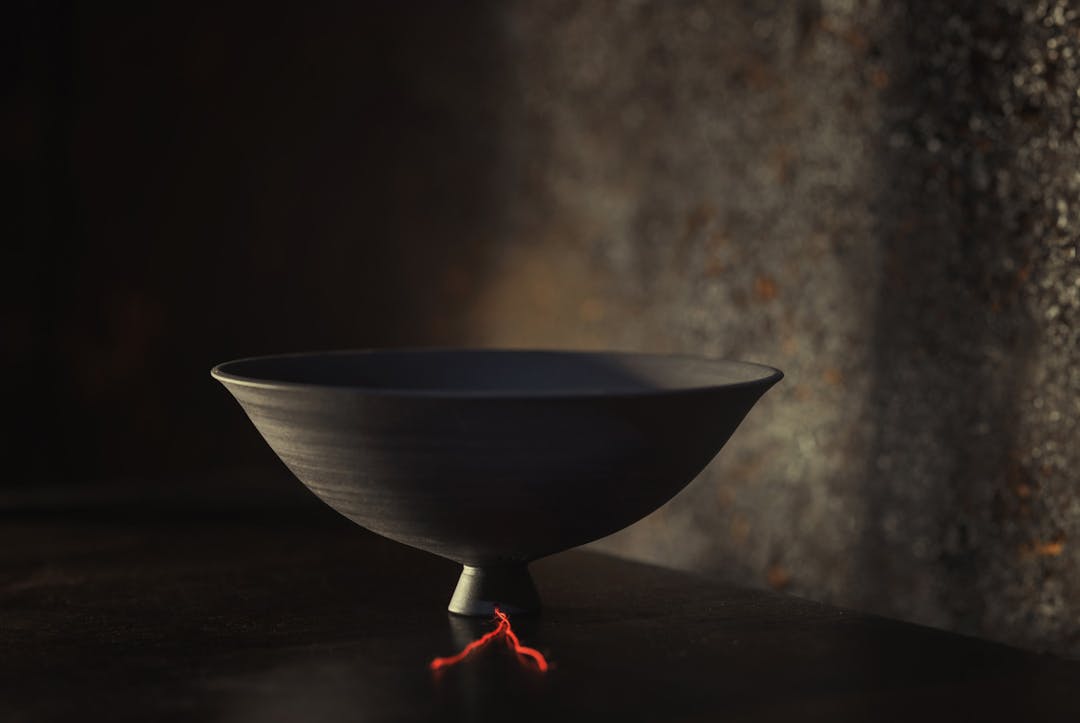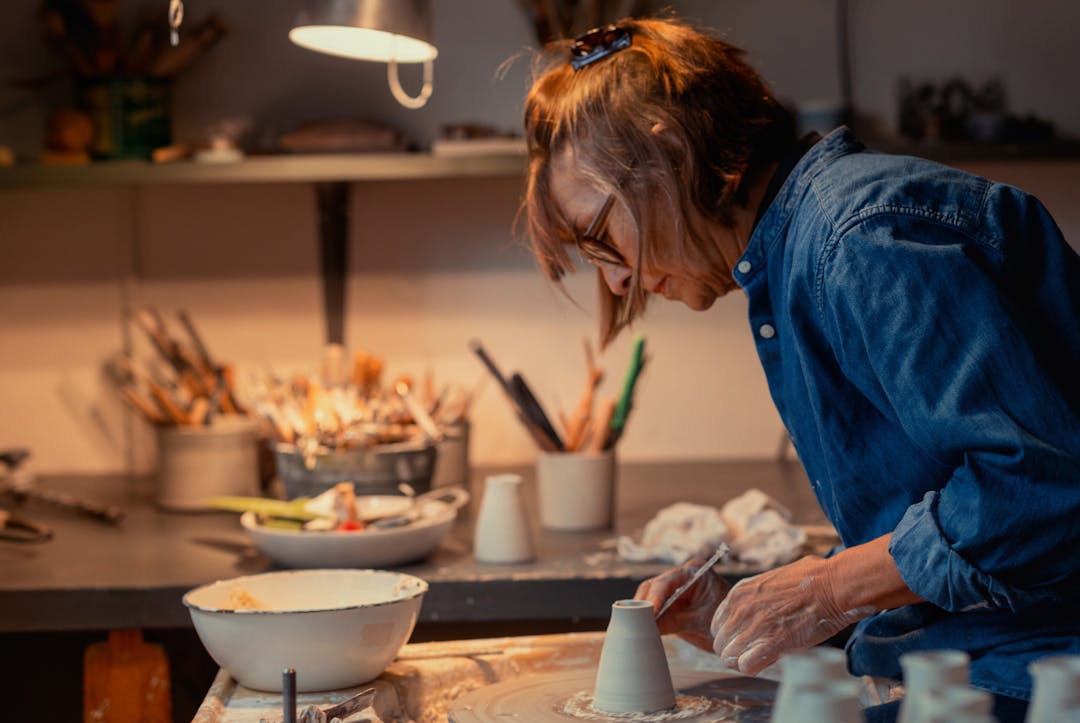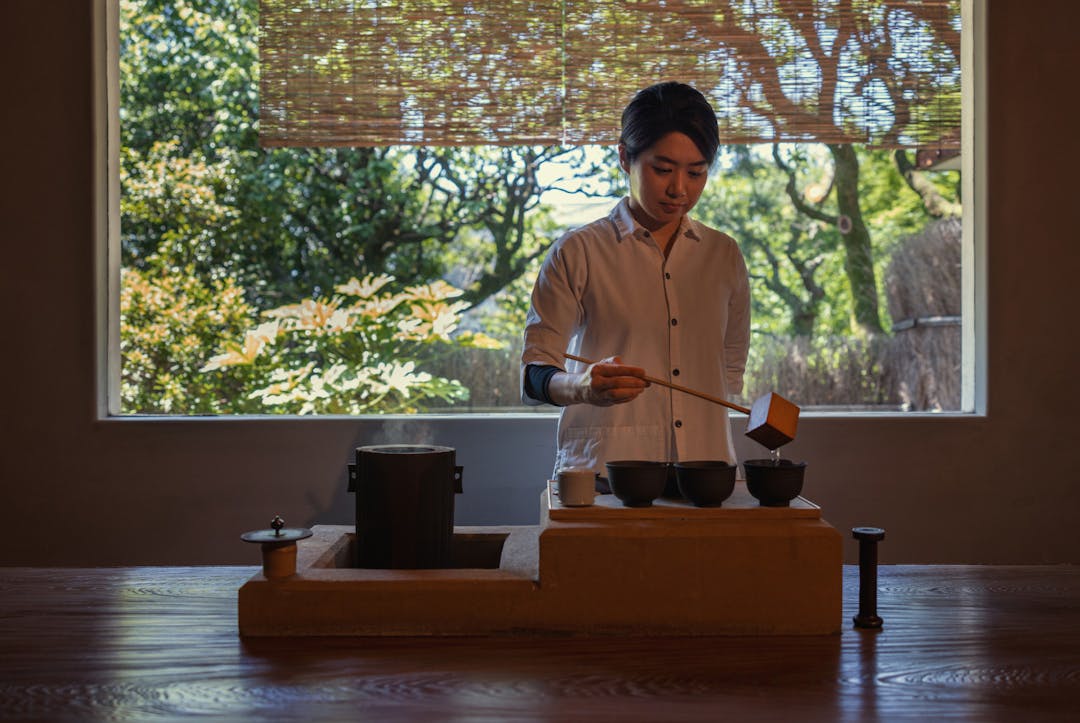
Play Movie

Listen
to Katherine Kennard
reading this story
CERAMICS AS A REFLECTION OF SELF
Shingo Oka
It’s early afternoon, and as the sun reaches its peak, Shingo Oka ambles up the small rise overlooking Tenpyogama, his workshop and kiln on the eastern side of the historic castle town of Karatsu. Over the past two decades, the potter has fired countless ceramics by day and night, transforming a former mandarin farm into a centre for creativity and production. Sharing the mountainous landscape with rows of citrus greenhouses, there is a calmness and an air of serenity, punctuated only by the brisk breeze rustling through the treetops. Taking its name from the Tenpyo era (729–749), a time when people sought peace and many temples were constructed, Tenpyogama has become a place where Oka has found the balance that his work demands.
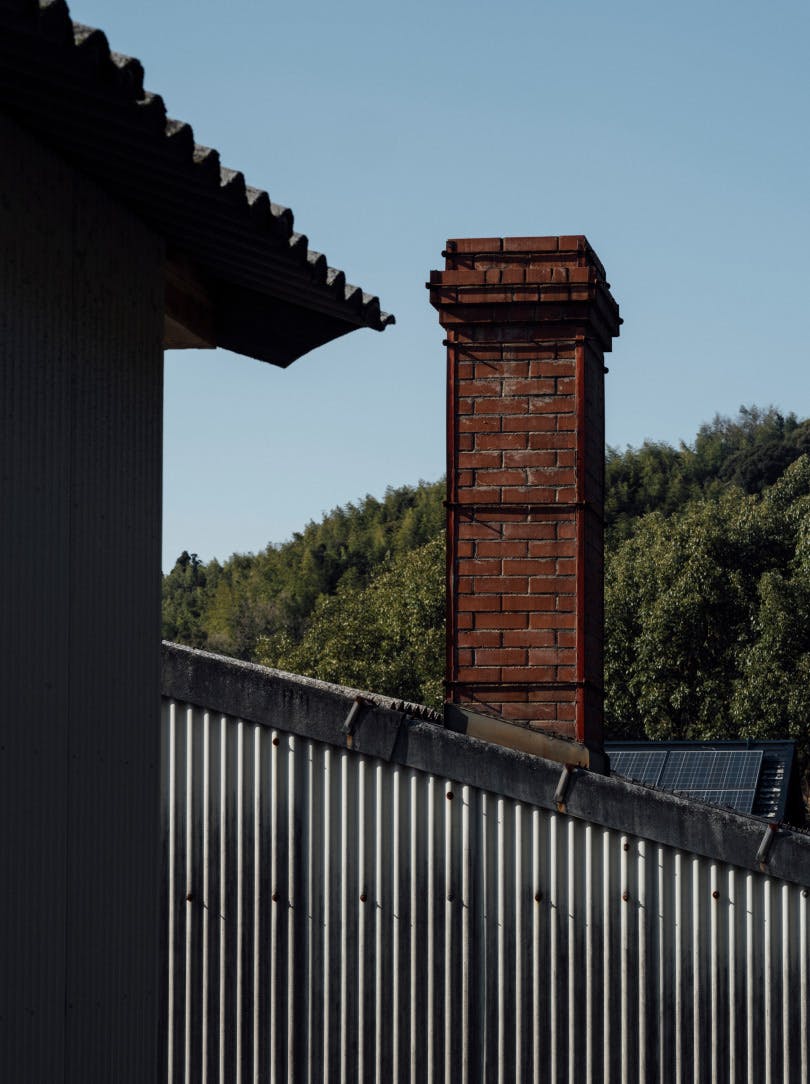
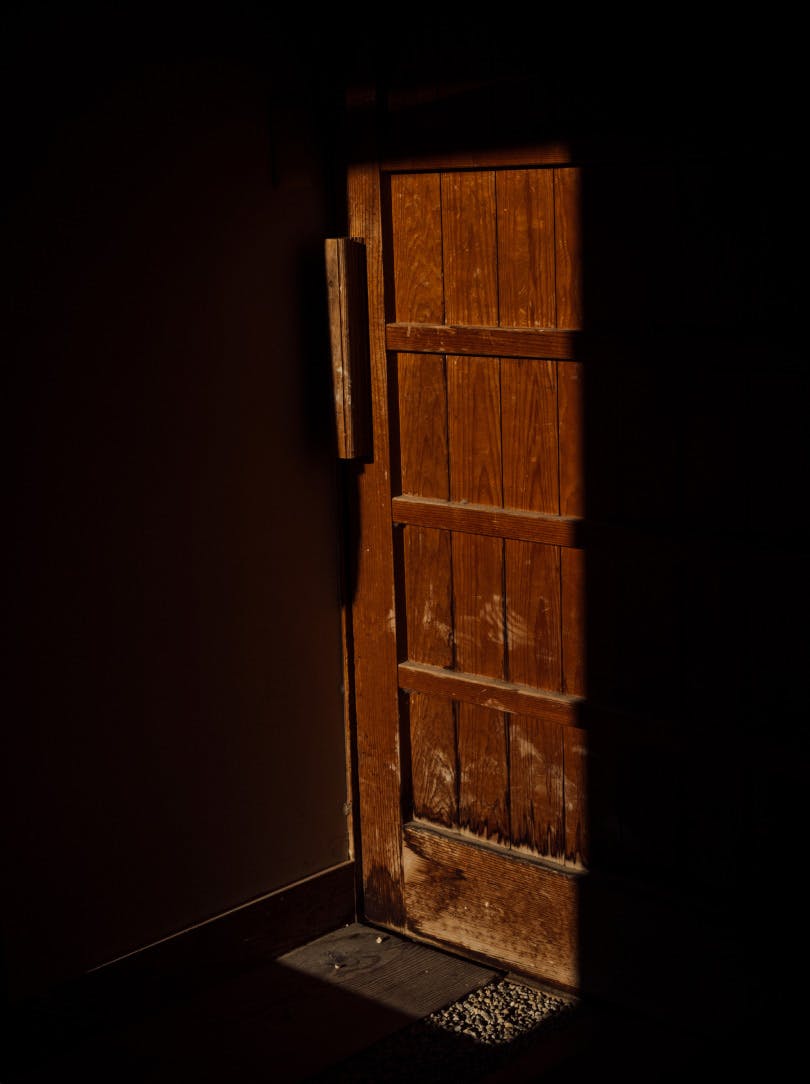
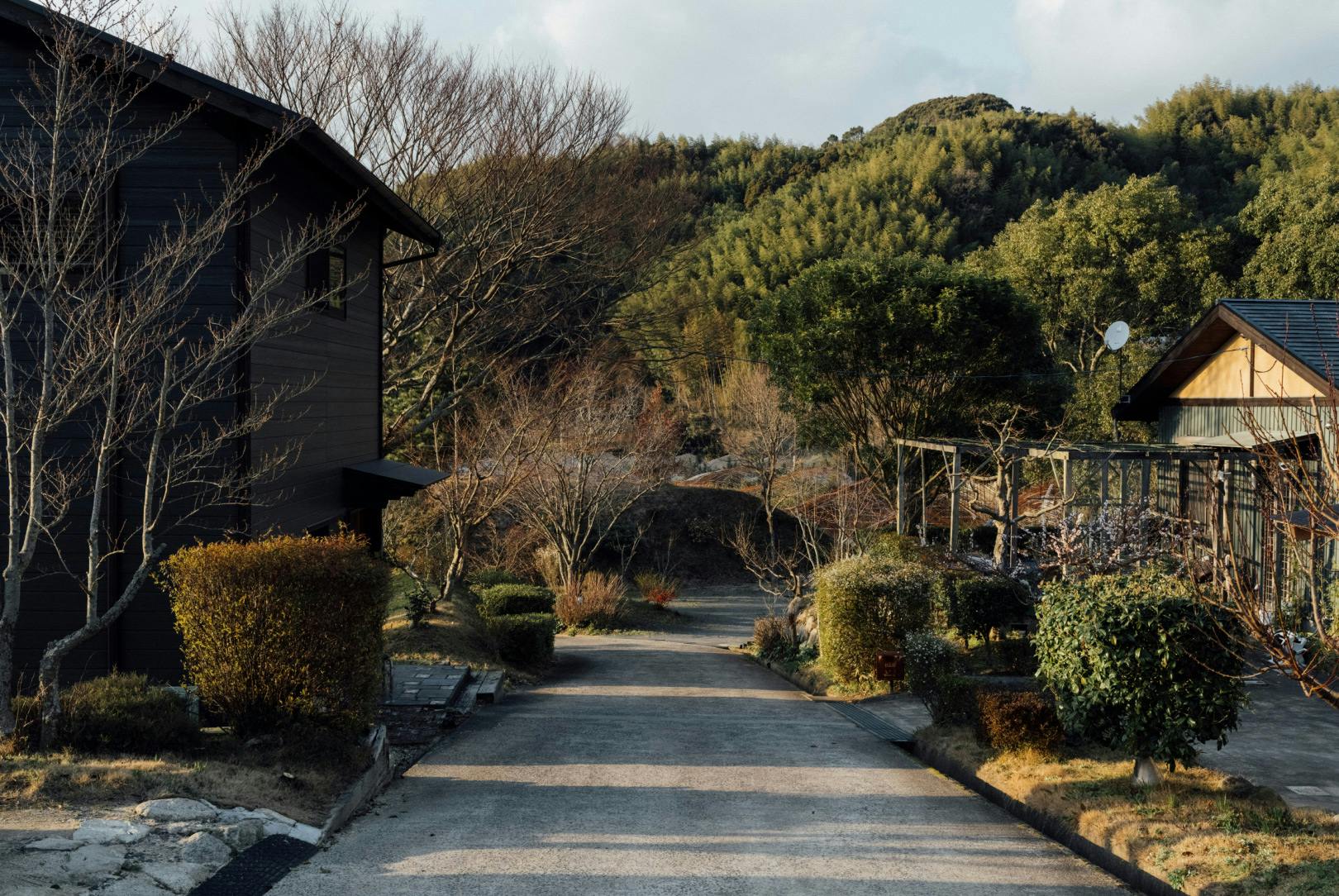
Reflecting on his move here, Oka recalls coming to terms with the sense of solitude. “It was so quiet that I decided to sleep here one night,” he says with a wry smile. “But I soon realised just how noisy birds can be at six in the morning.”
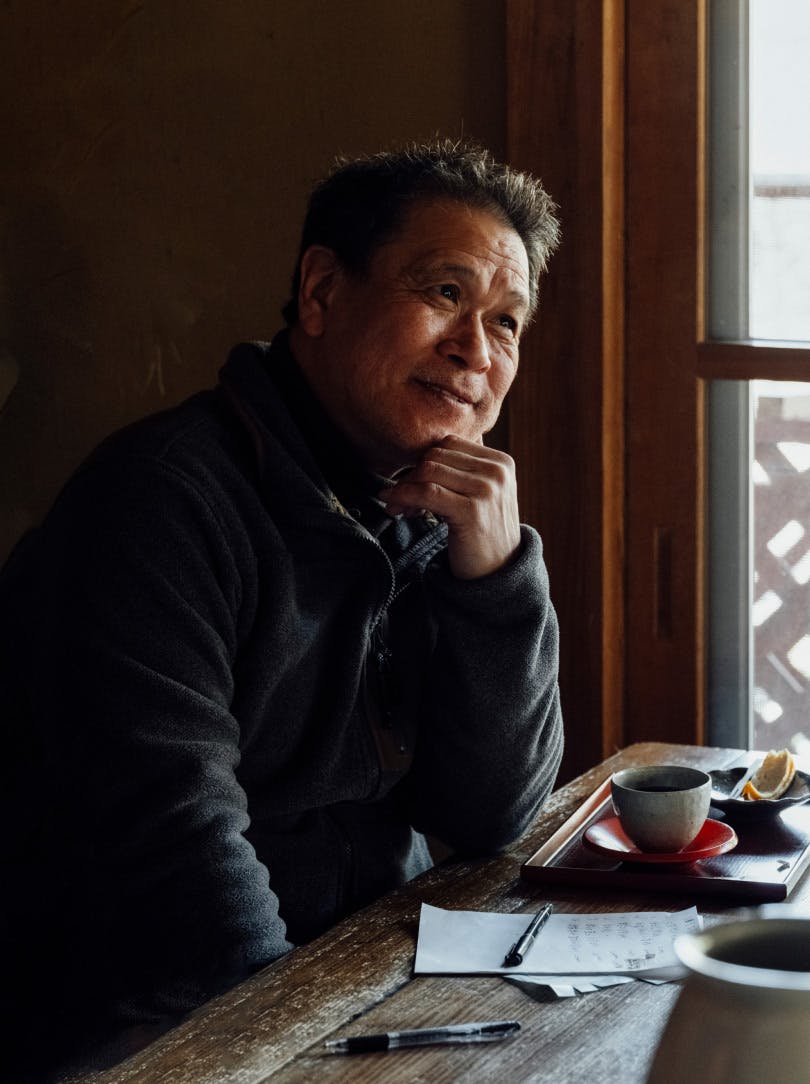
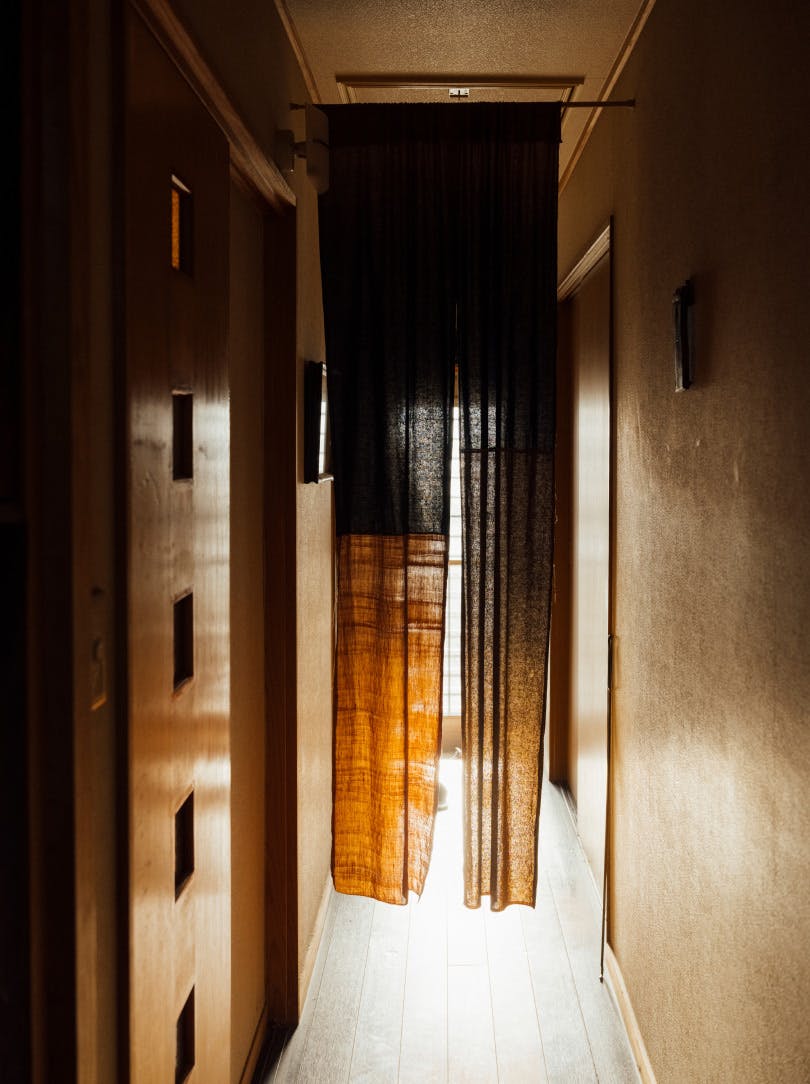
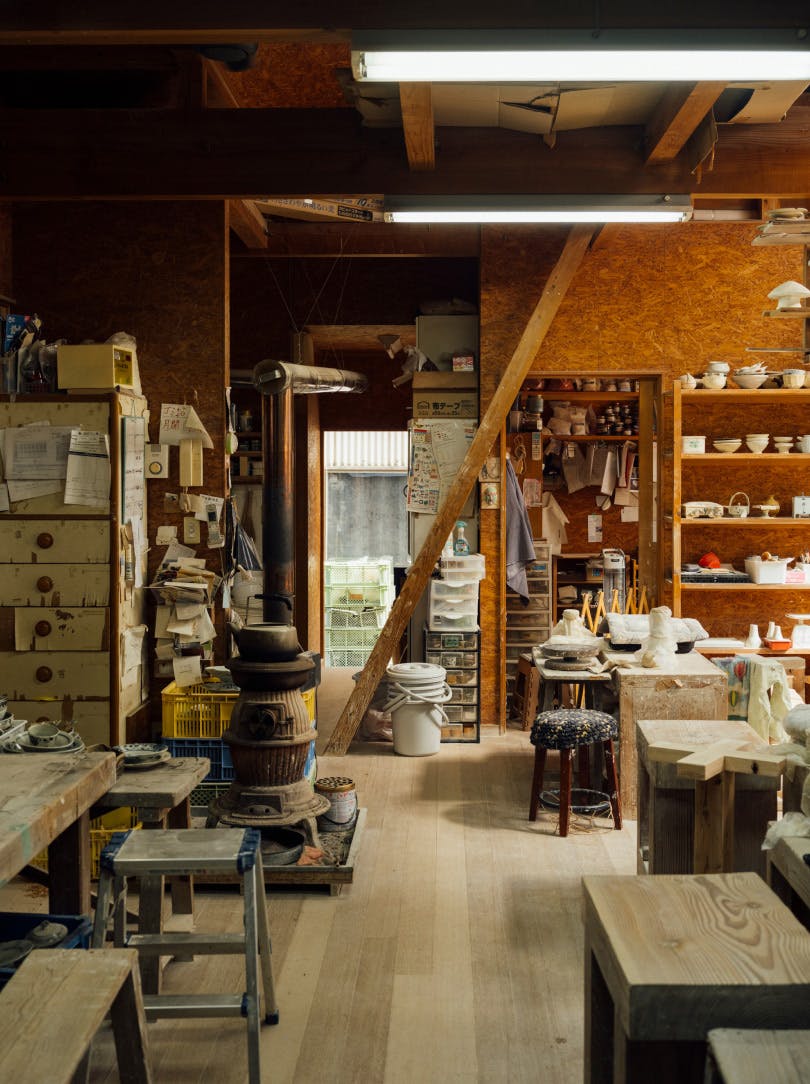
Putting aside such concerns, the location allowed him to work in close proximity to nature, which played a role in how he developed the site. Taken over in a state of disrepair, the land was cleared and buildings were constructed step by step, starting with the main ceramics workshop and extending to a gallery space, private studio and multiple kilns.
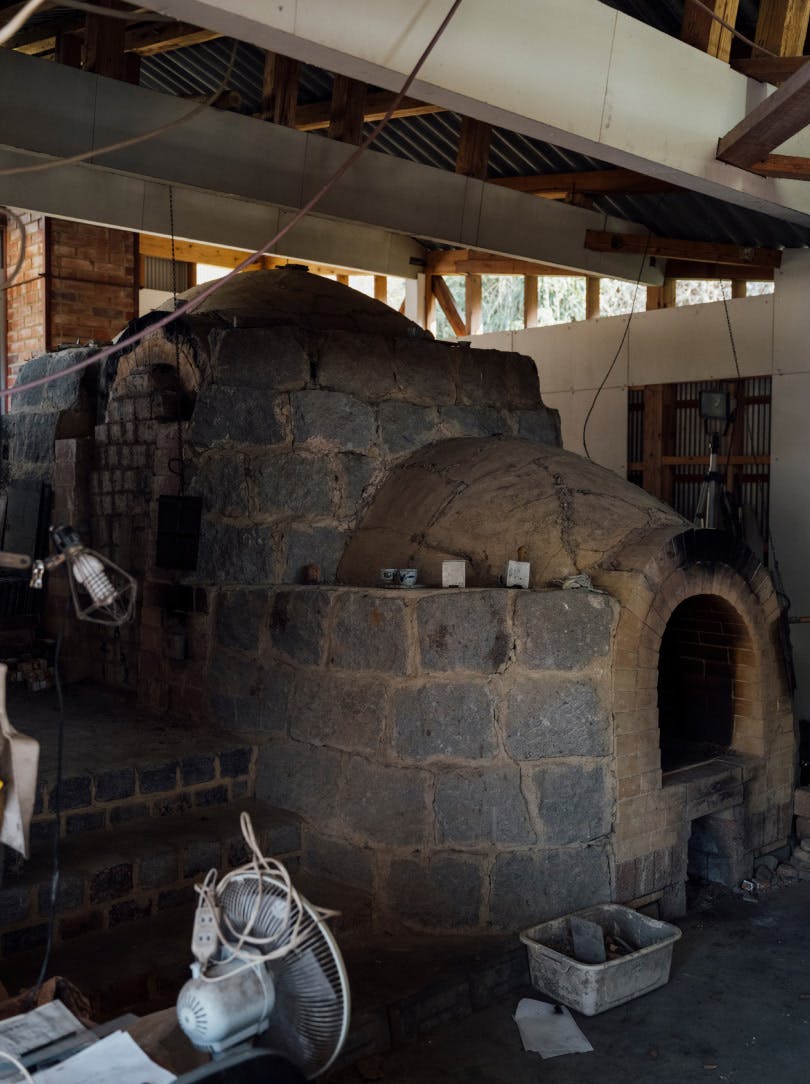
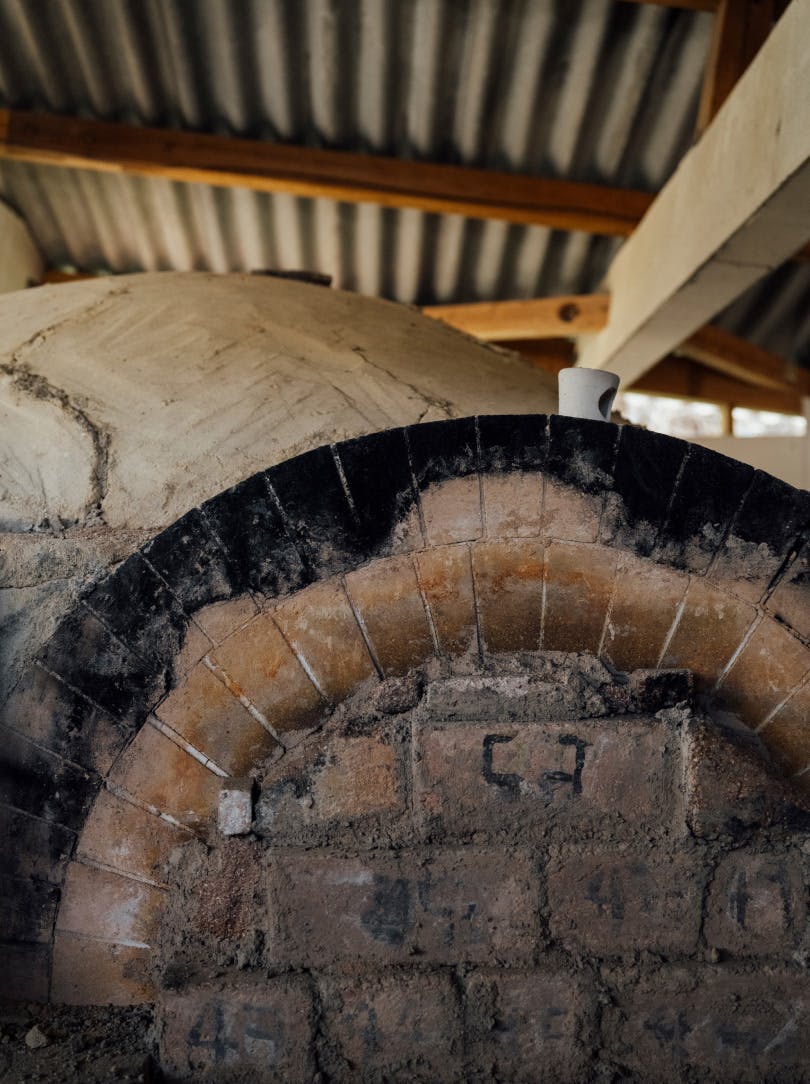
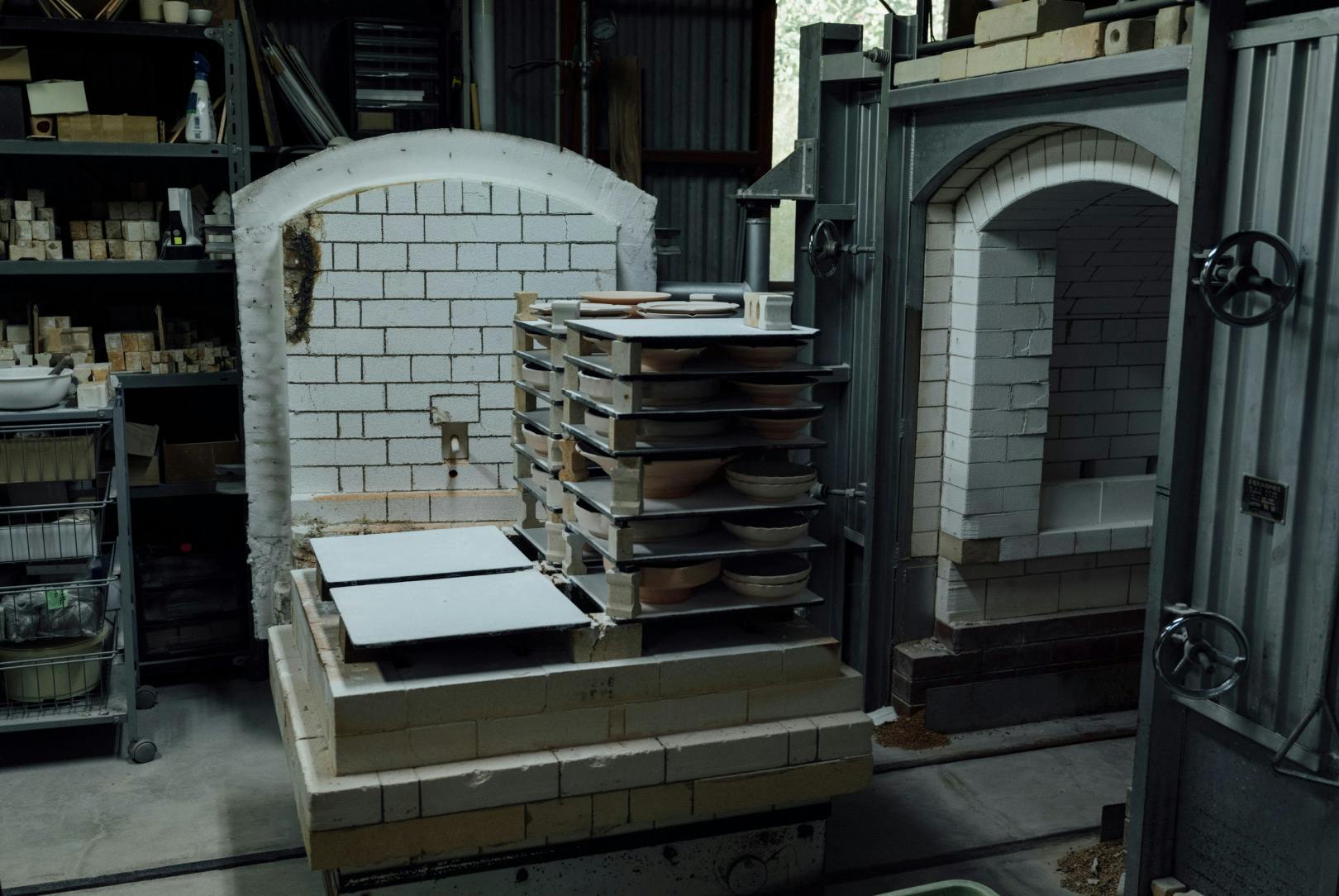
“This is where I spend my whole day, so I wanted to create an environment in which I could work comfortably, without the need to venture elsewhere,” says Oka as he walks past some beehives in the lower garden. “I can tend to the trees or walk off into the mountains, but I wanted to feel at ease just by simply being here.”
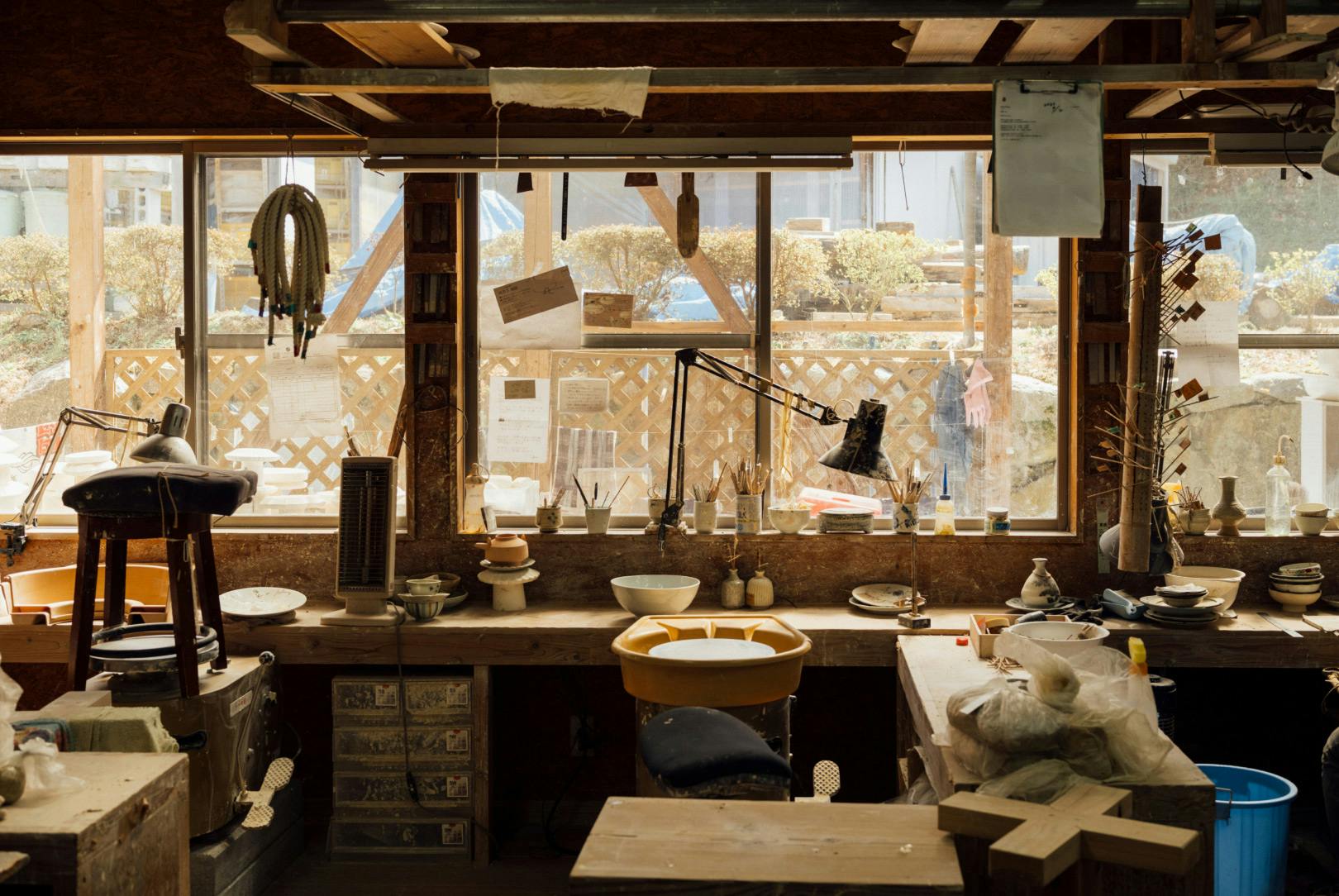
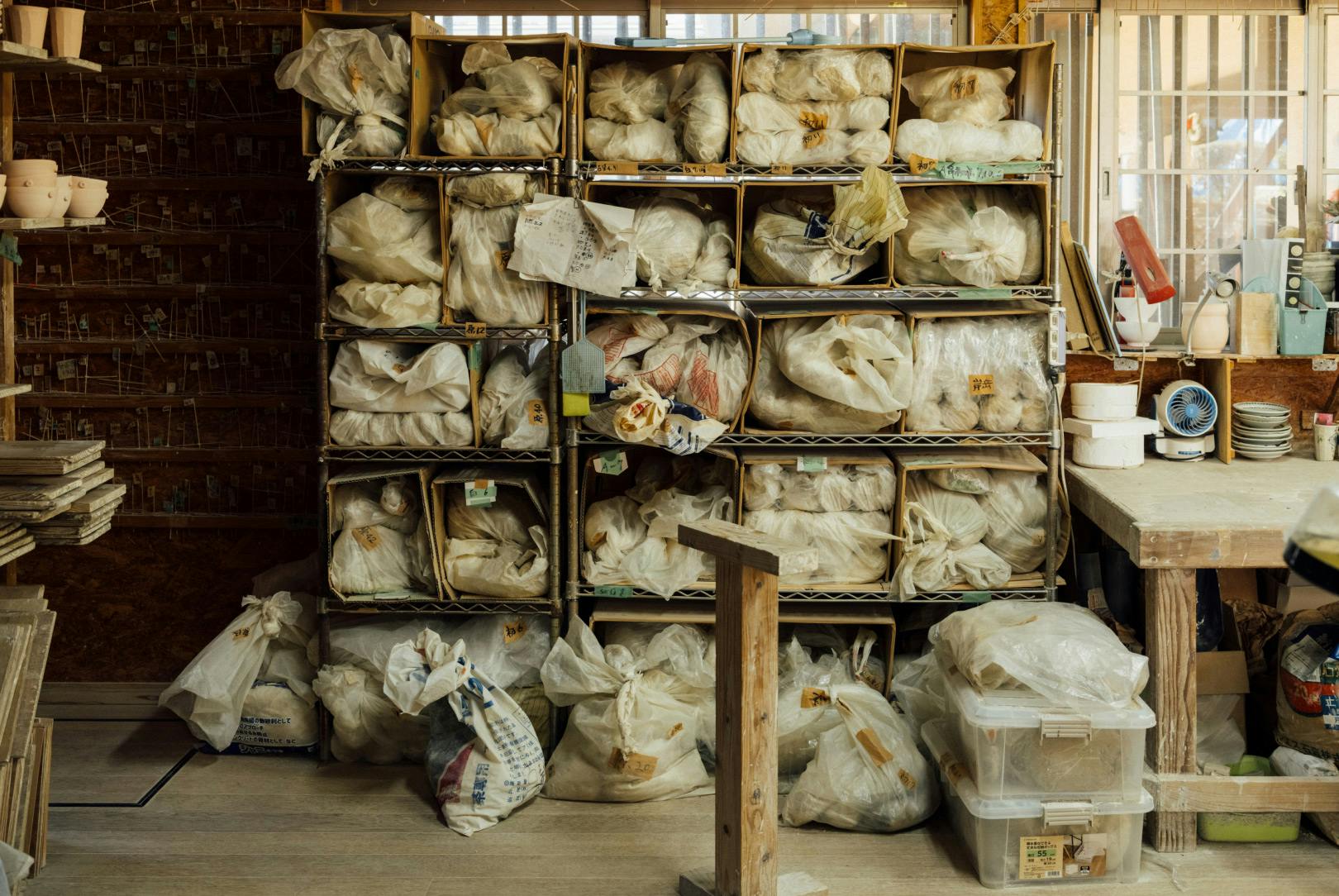
Touring the site, it’s clear that he has a deep connection to the place he has created. These bonds can be felt everywhere from the custom-made climbing kiln to the broken ceramics that he can’t bear to see go to waste, instead finding homes for them amongst the greenery or set into concrete panels. Within such details lie traces of the maker’s hand, shaped by a life of exploration.
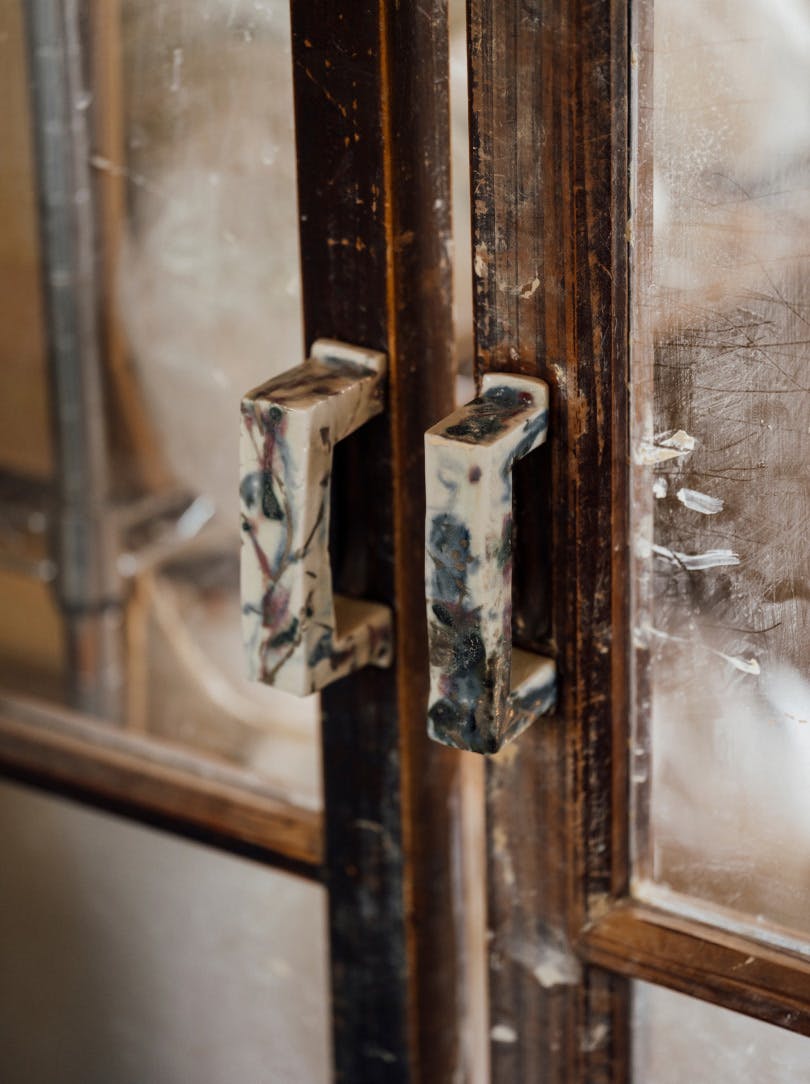
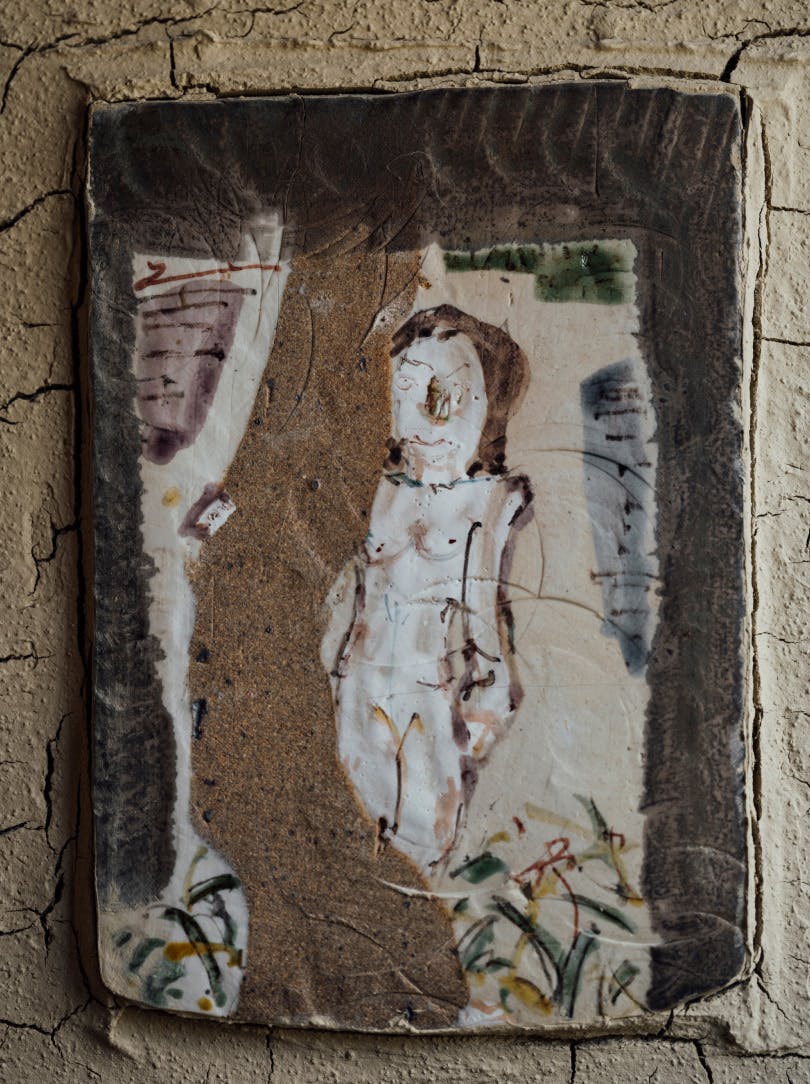
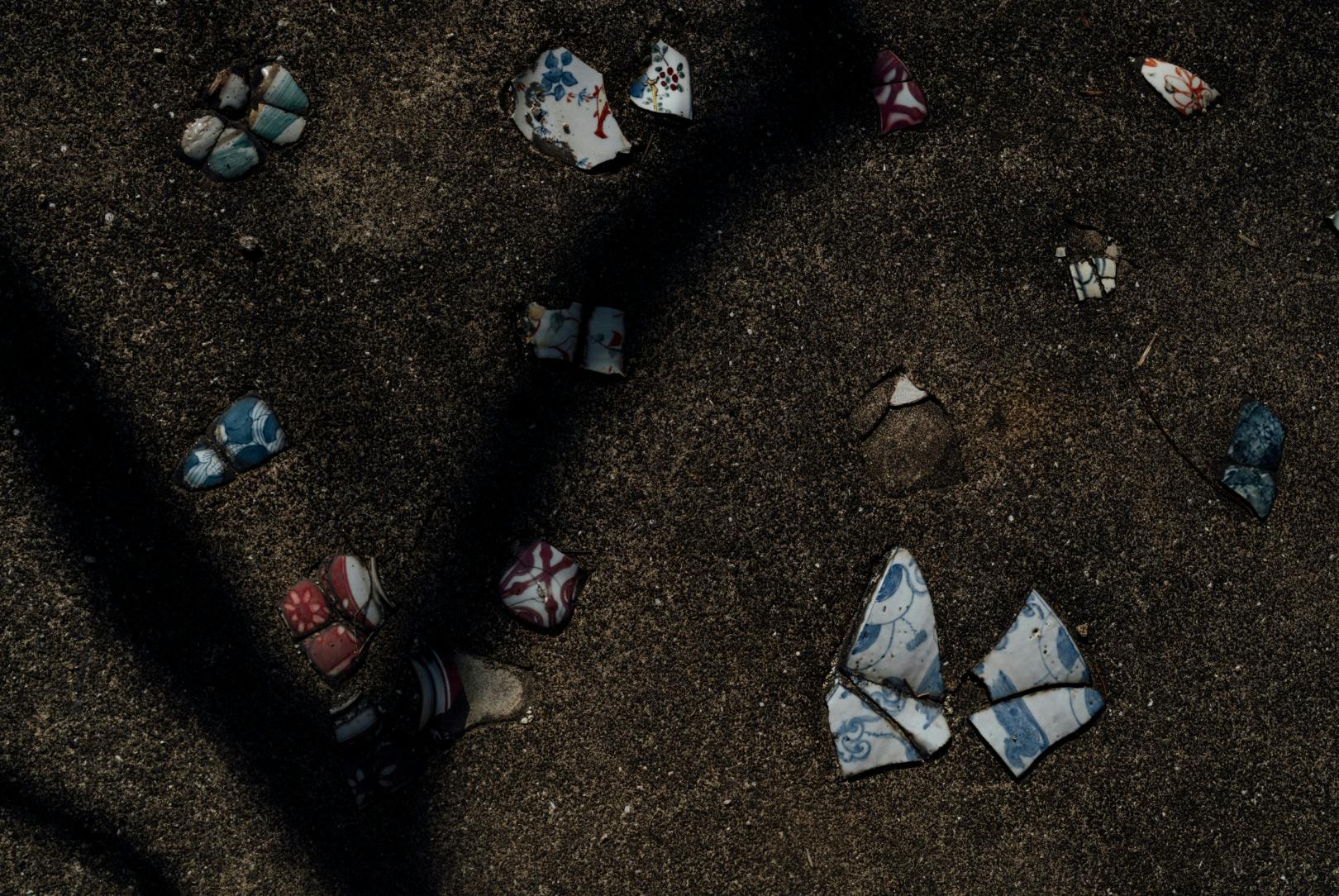
“I wanted to spend my time searching for the individuality within myself, rather than working for a company, which seemed possible in the world of craft.”
Shingo Oka
Growing up in the port city of Sasebo, Nagasaki prefecture, Oka’s childhood was filled with sport and the sea. As a high school student, he would often skip class to travel far and wide by bicycle – drawn to the journey, rather than the destination. “While everyone else studied over summer, I rode all the way from Kyushu to Okinawa, meeting new people, camping out and simply going with the flow,” he recalls with a hint of pride. “In my eyes, it was a different kind of learning, allowing me to find myself.” This independent spirit would remain strong after university, when he took the opportunity to visit one of his father’s friends in the nearby kiln town of Arita. Witnessing the potter at work opened his eyes to a possible future. “I wanted to spend my time searching for the individuality within myself, rather than working for a company, which seemed possible in the world of craft.”
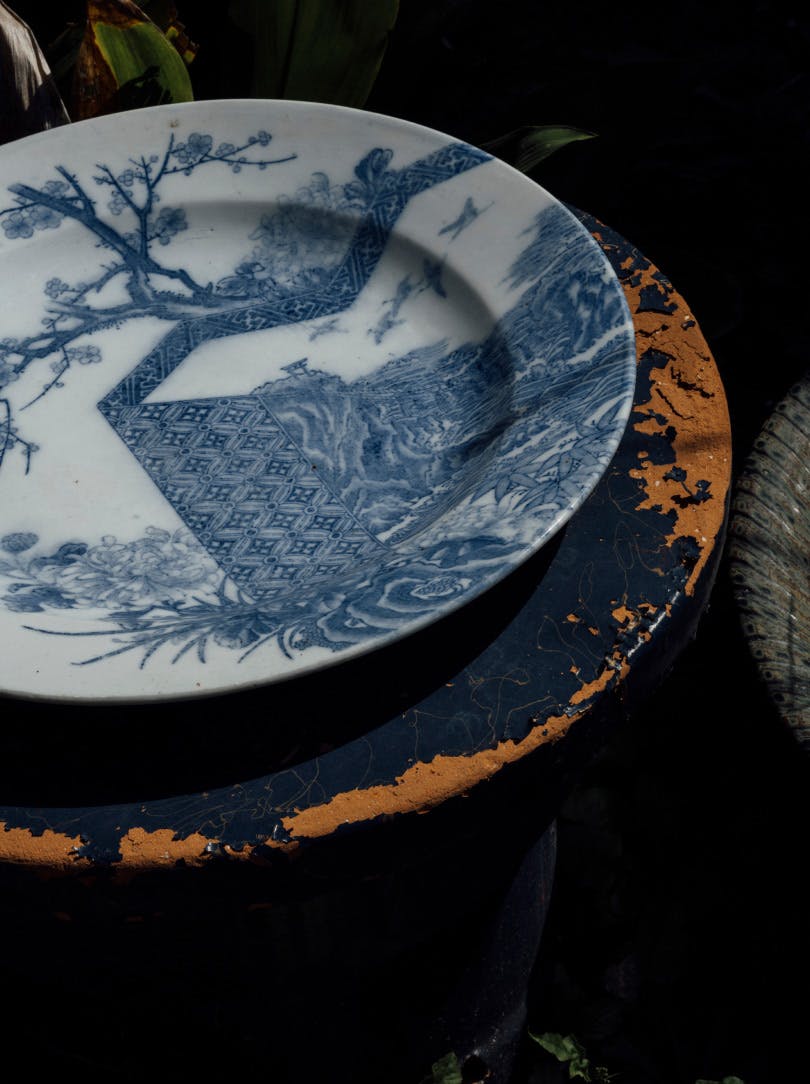
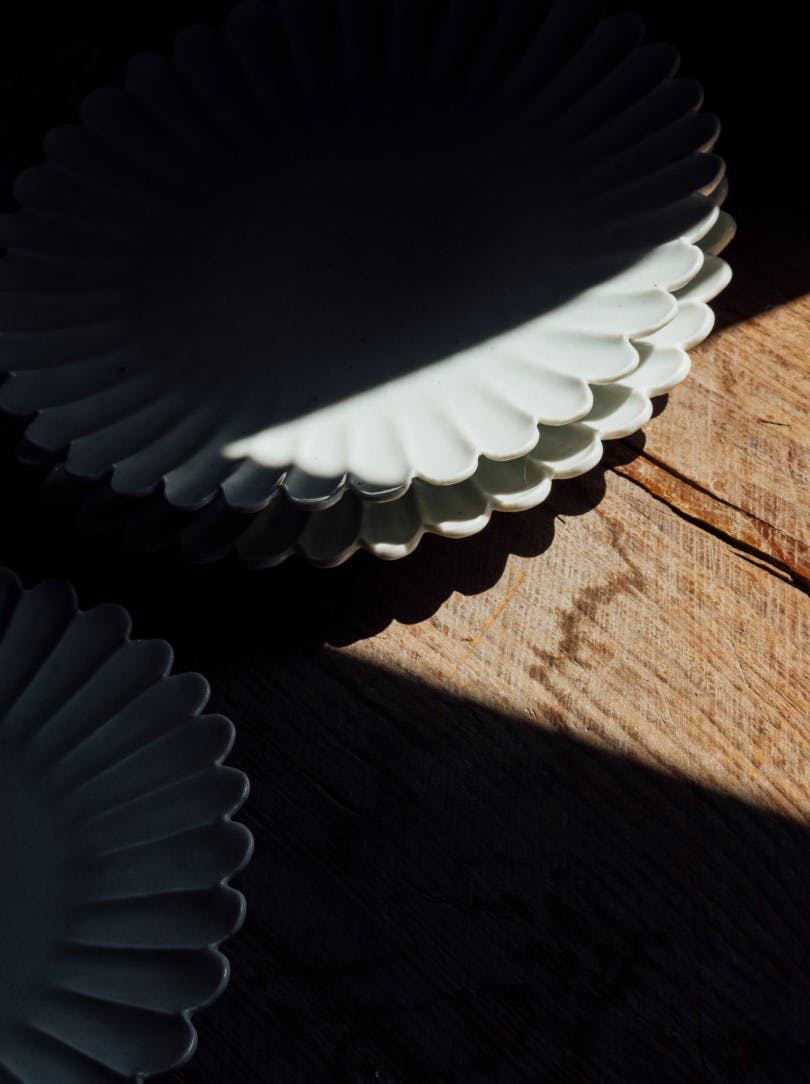
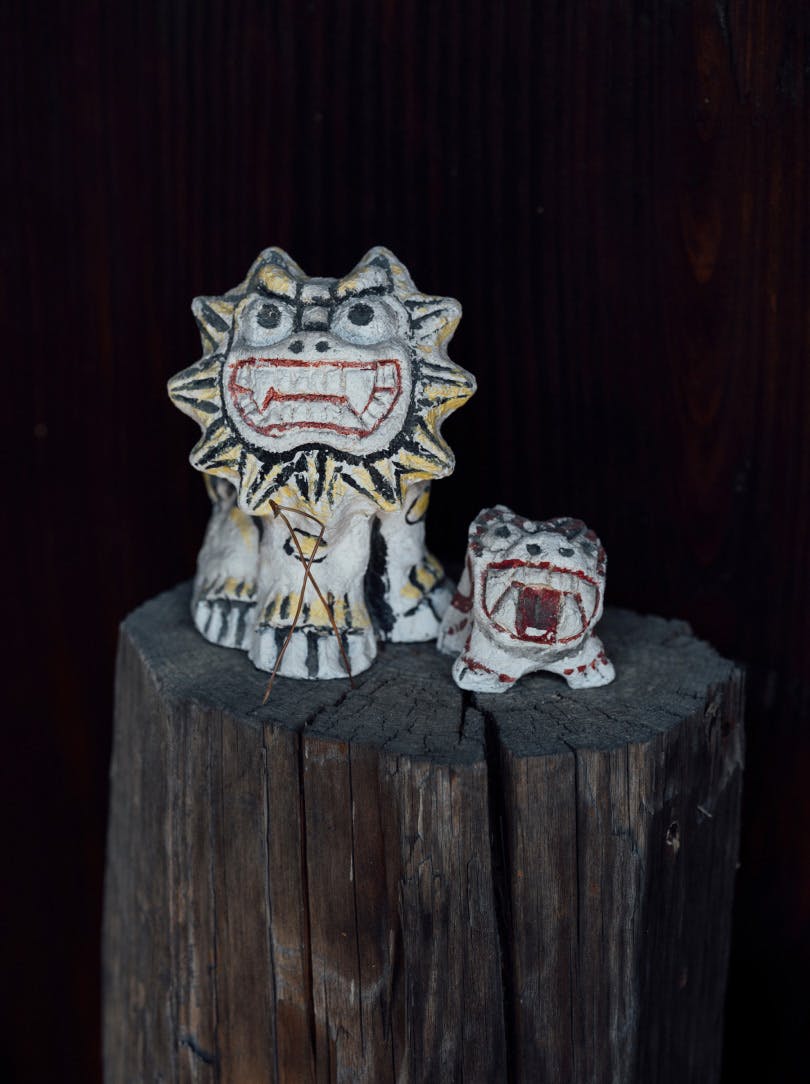
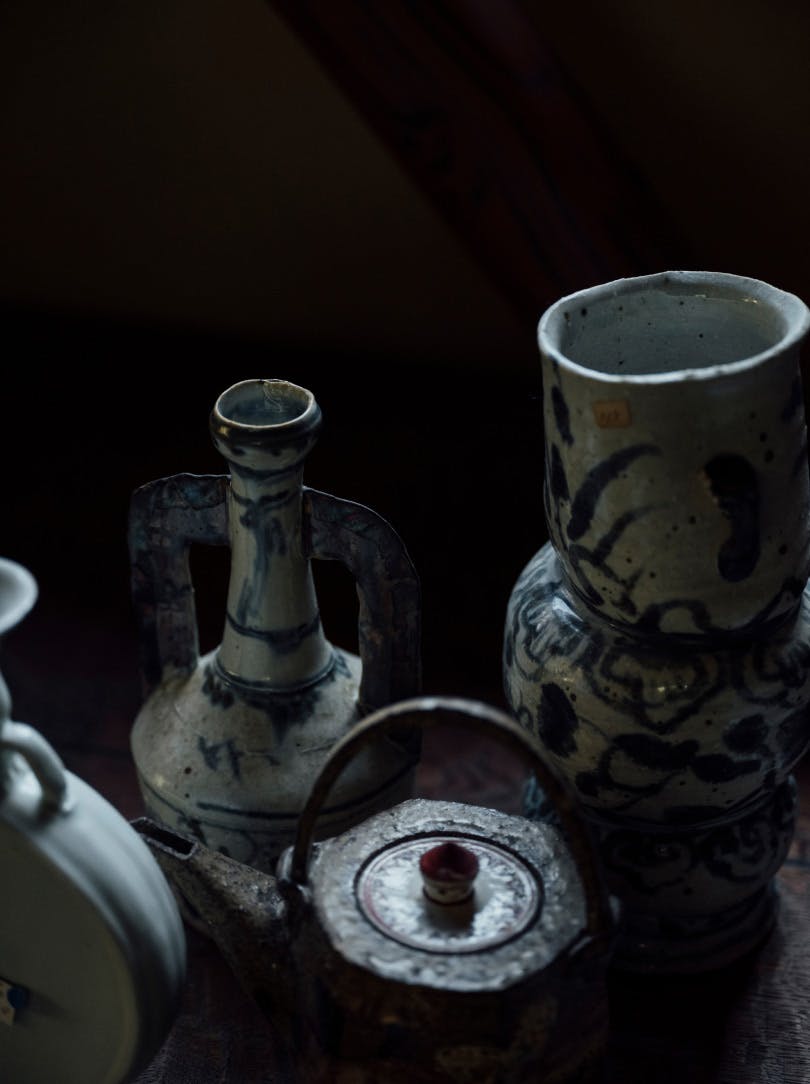
Still in his early twenties, Oka enrolled at the Saga Ceramics Research Laboratory in Arita, where he was exposed to a range of techniques, styles and expressions, along with the conceptual side of ceramics. After a number of years working under local fine artists, he was introduced to the influential culinary figure Chu Shinojima, who would come to shape his outlook and approach to ceramics. Oka decided to join his workshop in Arita, where a team of potters were producing a wide range of tableware and other ceramics for Shinojima’s traditional ‘ryotei’ restaurant and various publishing projects.
“For five whole years, I was simply paid to study,” says Oka in his typically forthright manner. As a newcomer to the field of tableware, he was tasked with examining and absorbing knowledge from the work of renowned potters. Building on this research, he would then sit at the potter’s wheel alongside Shinojima, who would instruct him to make specific pieces, one after the other. Learning was his profession, and he would travel to various regions to learn from local kilns, archives and historical materials. If the information was not forthcoming or gaps emerged, he would trace the history of Japanese, Korean and Chinese ceramics, drawing his own links and conclusions along the way. This influential period, dedicated to acquiring knowledge, laid the foundations for the diverse expressions that would shape his identity as an artist.
“I believe that there’s nothing more boring than settling on a particular style. Once you’ve made that decision, it’s all over.”
At the age of 35, a growing family saw Oka make the decision to establish his own workshop in Nishi Arita. Yet rather than follow the common path of becoming an artist focused on traditional crafts or The Japan Fine Arts Exhibition, Oka opted to make his mark as a ‘shokki-sakka’, or tableware artist. “At that time, a lot of tableware was being produced by large ceramics makers, but I felt that something was lacking. Little by little, potters like myself began to make original pieces with designs that would enhance cuisine,” he recalls.
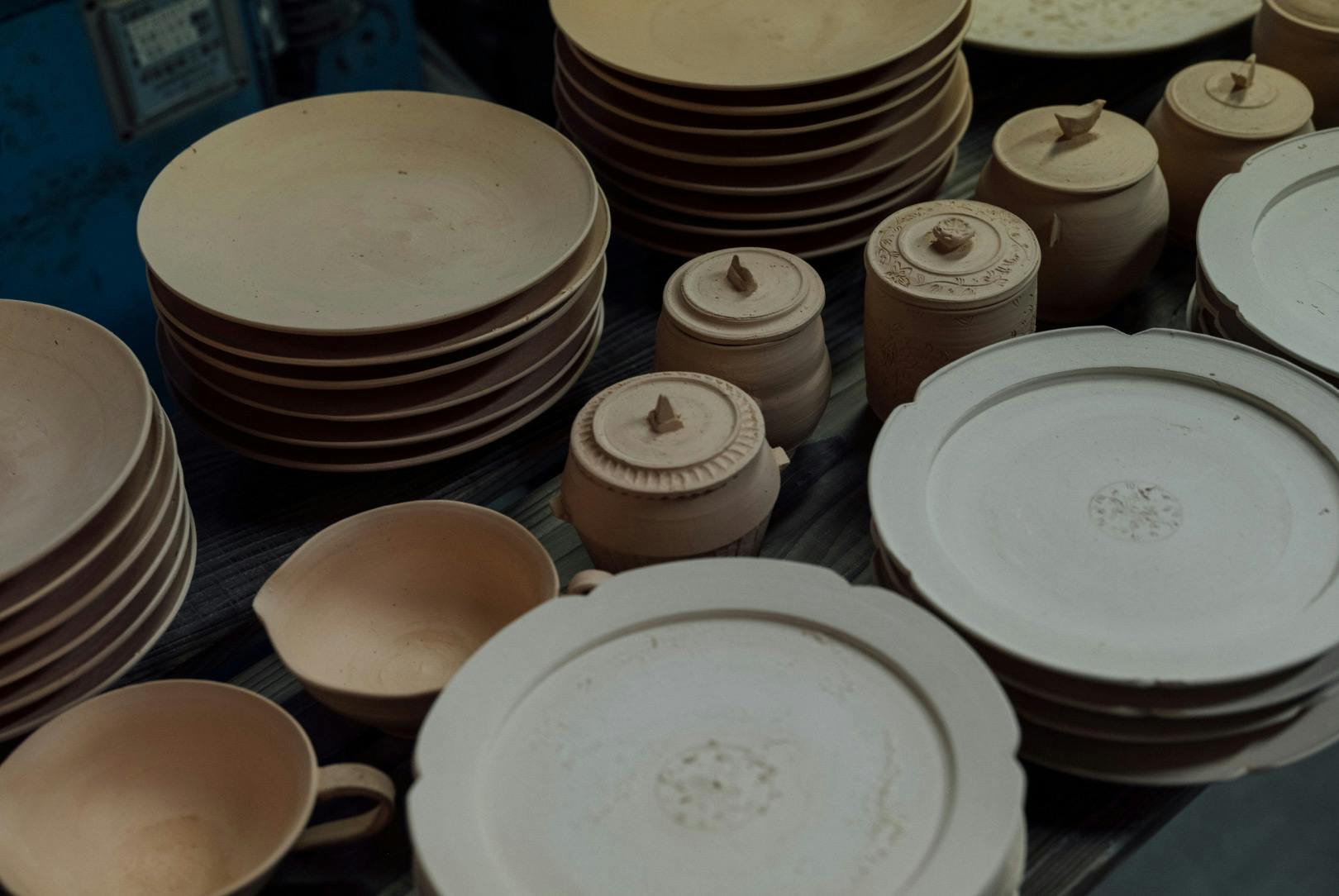
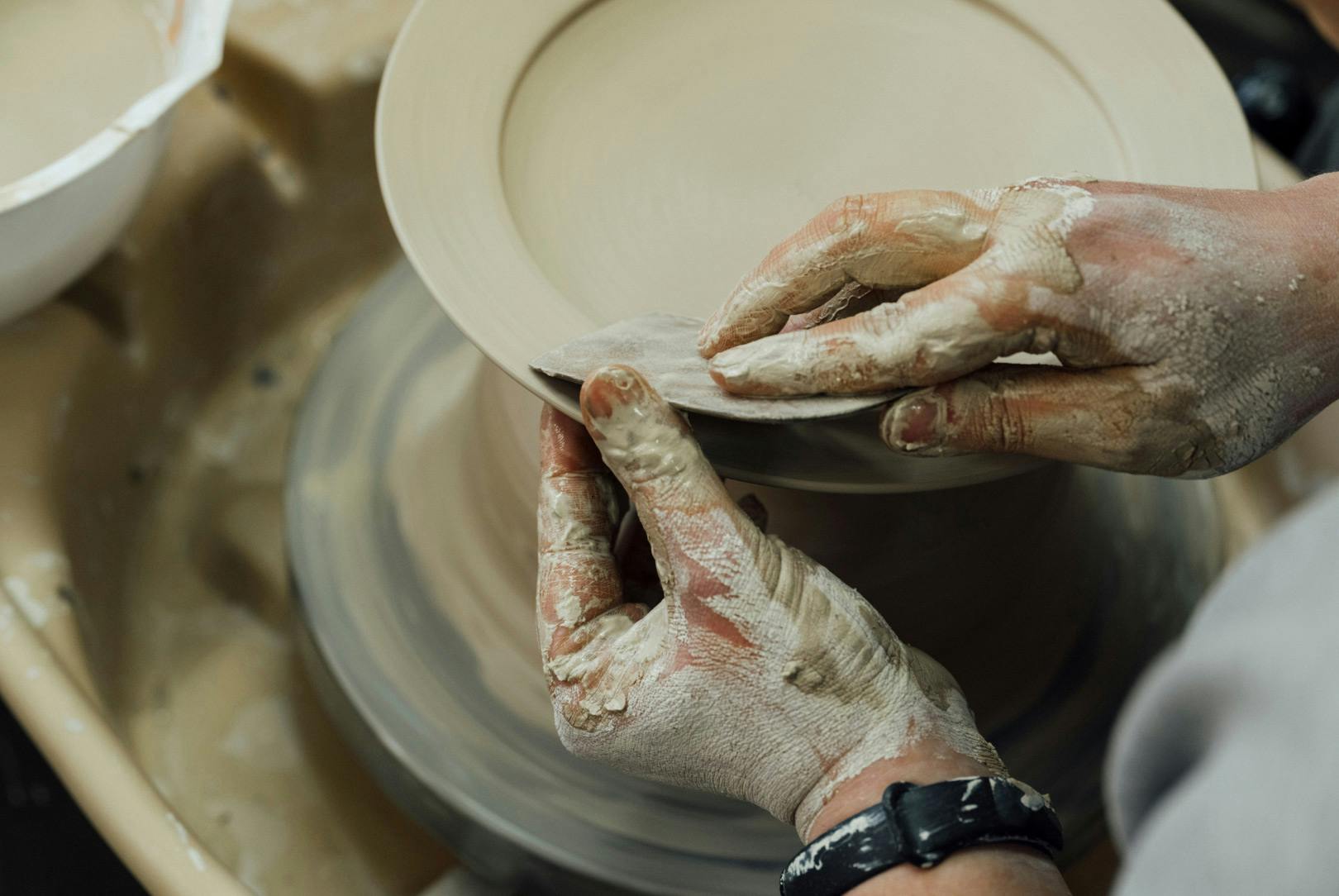
The starting point for Oka’s first exhibition was Mino ware. Produced in the Tono region of Gifu prefecture for some 1,300 years, its well-known styles include Shino, which features thick, milky feldspathic glaze on top of bold iron designs, and Oribe, which pairs asymmetric moulded forms with freely applied glazes in rich colours. “I’d never been taught how to make Shino and Oribe properly, so everything was based on my own interpretations. There are records of Japanese ceramics showing the typical forms of traditional ceramics, but I chose to ignore them. Even if my interpretation wasn’t completely accurate, the fact that it was mine was good enough.” Making and presenting his works in Arita, free of any references to Mino, he received an overwhelmingly positive response. Even his former teachers came to view the works, curious as to exactly how he’d produced such expressions.
While only a fraction of tableware from that era remains at Tenpyogama, the archived works possess a certain boldness, capturing Oka’s free-flowing creativity and experimentation at the time. Arranging the works on a well-worn table in the gallery space, Oka is joined by his wife Satsuki, a fellow potter, and the pair reacquaint themselves with long-lost artefacts of sorts. There’s a vase constructed from a stack of bulbous forms, fluid brushstrokes marking their curves; and a robust-looking teapot that merges ‘ryotei’ influences with primitive motifs and a rustic finish. “These pieces are an accurate reflection of his character back then,” Satsuki says with a smile. “His works have mellowed over the years – just like him.”
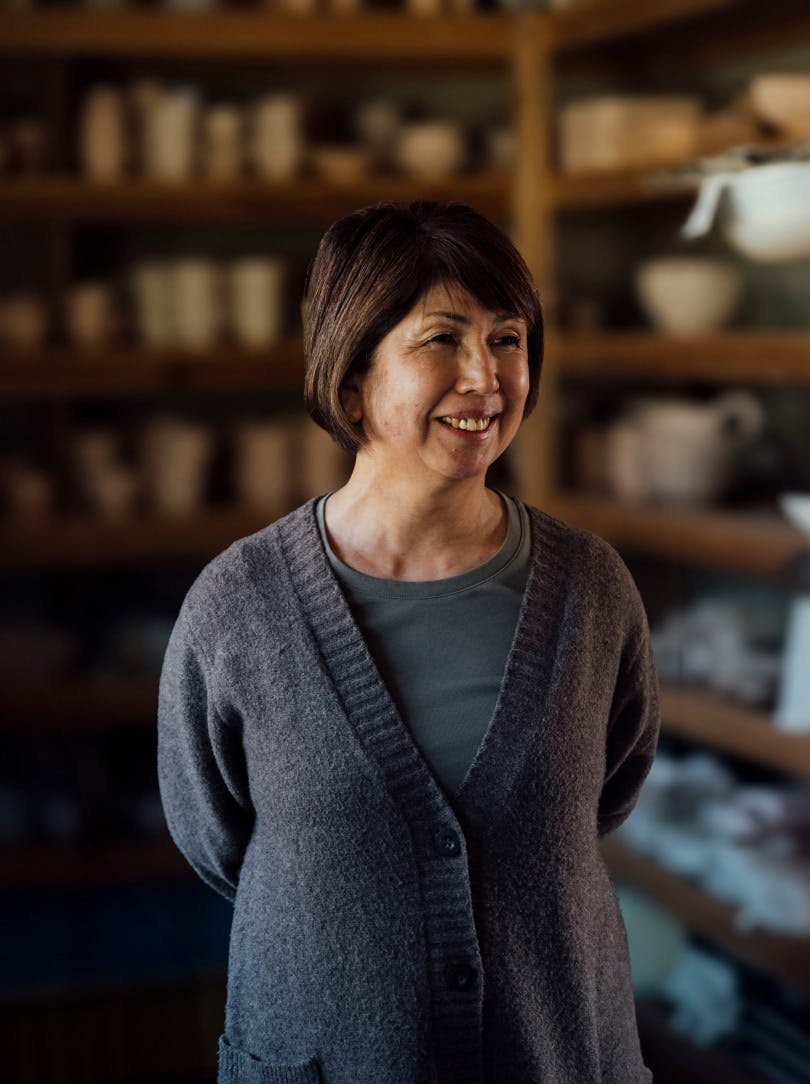
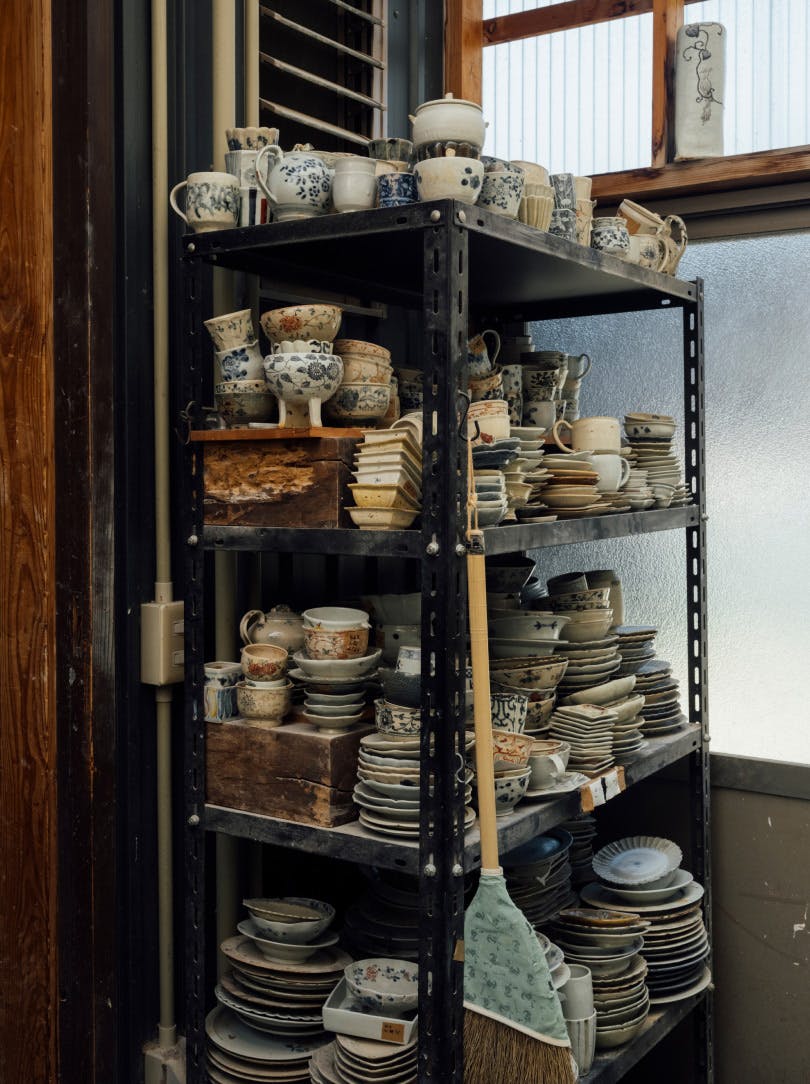
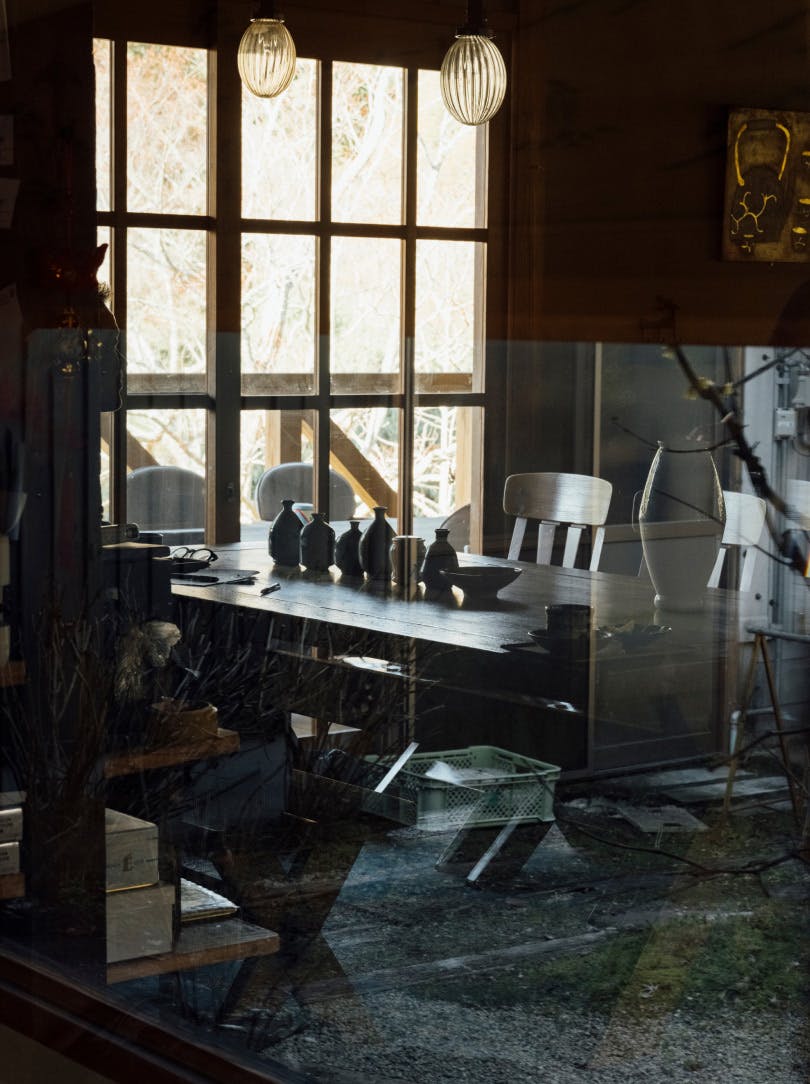
As one of the key centres for Japan’s ceramics industry, Arita provided Oka with the benefit of resources and exposure, but the constant flow of visitors brought distractions that would eventually lead to his departure. Seeking a change of scenery, he decided to venture north to Karatsu, where he found a rich history of ceramics dating back to the late sixteenth century. During its early stages, the local ceramics industry became renowned for producing tableware and pieces for tea ceremonies, laying the foundations for various styles of ceramics that reflect the area’s culture and heritage, along with the influence of early Korean potters. Among them, brush-decorated Karatsu ware is adorned with rustic images in iron pigment, while Mishima Karatsu ware features inlaid patterns enhanced by a layer of white slip.
“My work isn’t only about drawing on what I’ve accumulated; it’s also about revealing the things that I’ve chosen to throw away.”
Since shifting his base to Karatsu in 2002, Oka has continued to forge his own path forward. Unbound by the styles, techniques and conventions traditionally associated with the area, he pursues a diversity of expressions that reflect his journey as a potter. Building on a wealth of technical expertise, he draws hints from ceramics past and present, whether it be ‘sometsuke’ porcelain or Joseon Dynasty ware, reinterpreting them from his own unique perspective. While other ceramicists may aspire to establish to a signature aesthetic, his pursuit of various expressions, along with the spirit of creation behind them, have become defining factors of his oeuvre. “I believe that there’s nothing more boring than settling on a particular style,” he says in a straightforward manner. “Once you’ve made that decision, it’s all over.”
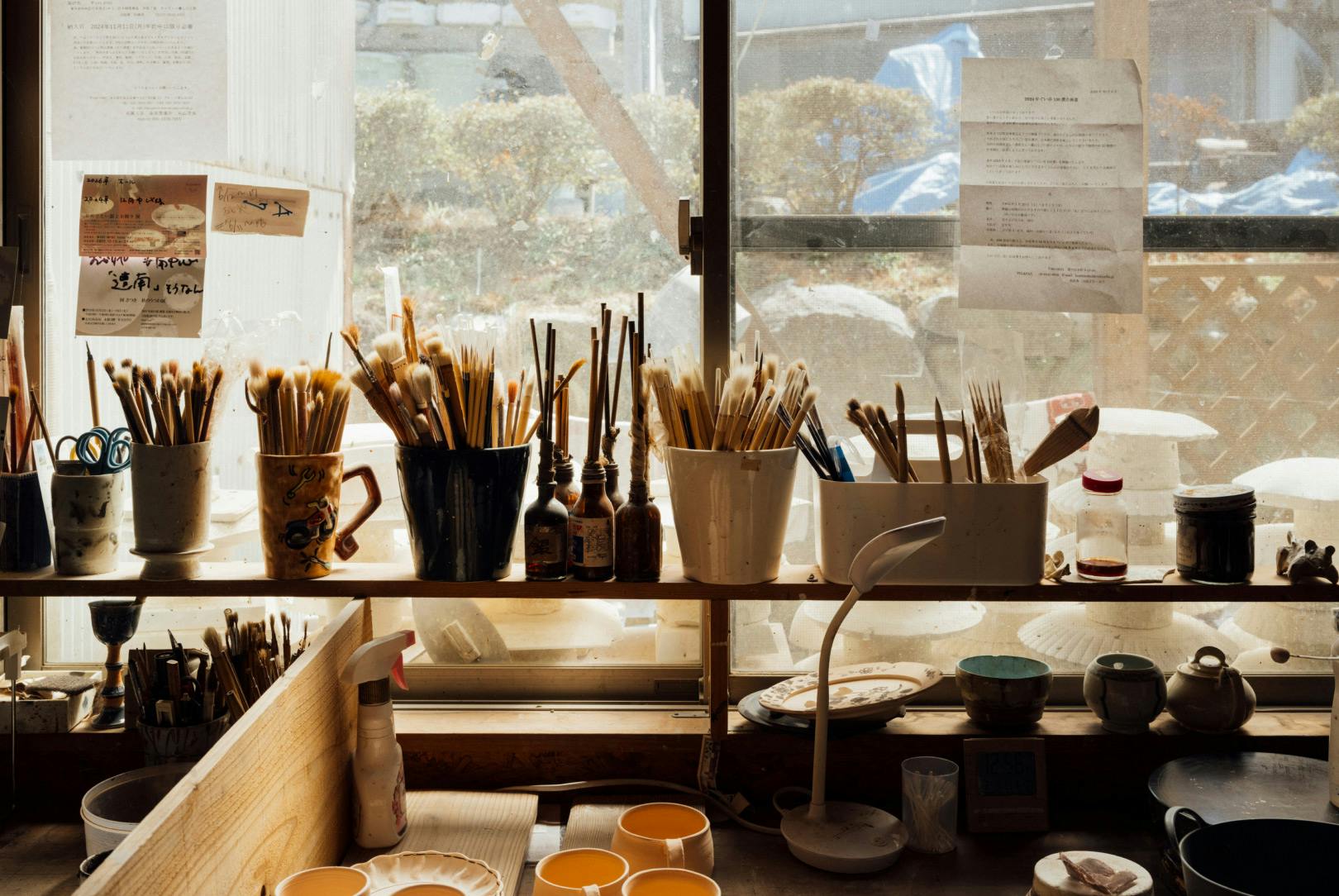
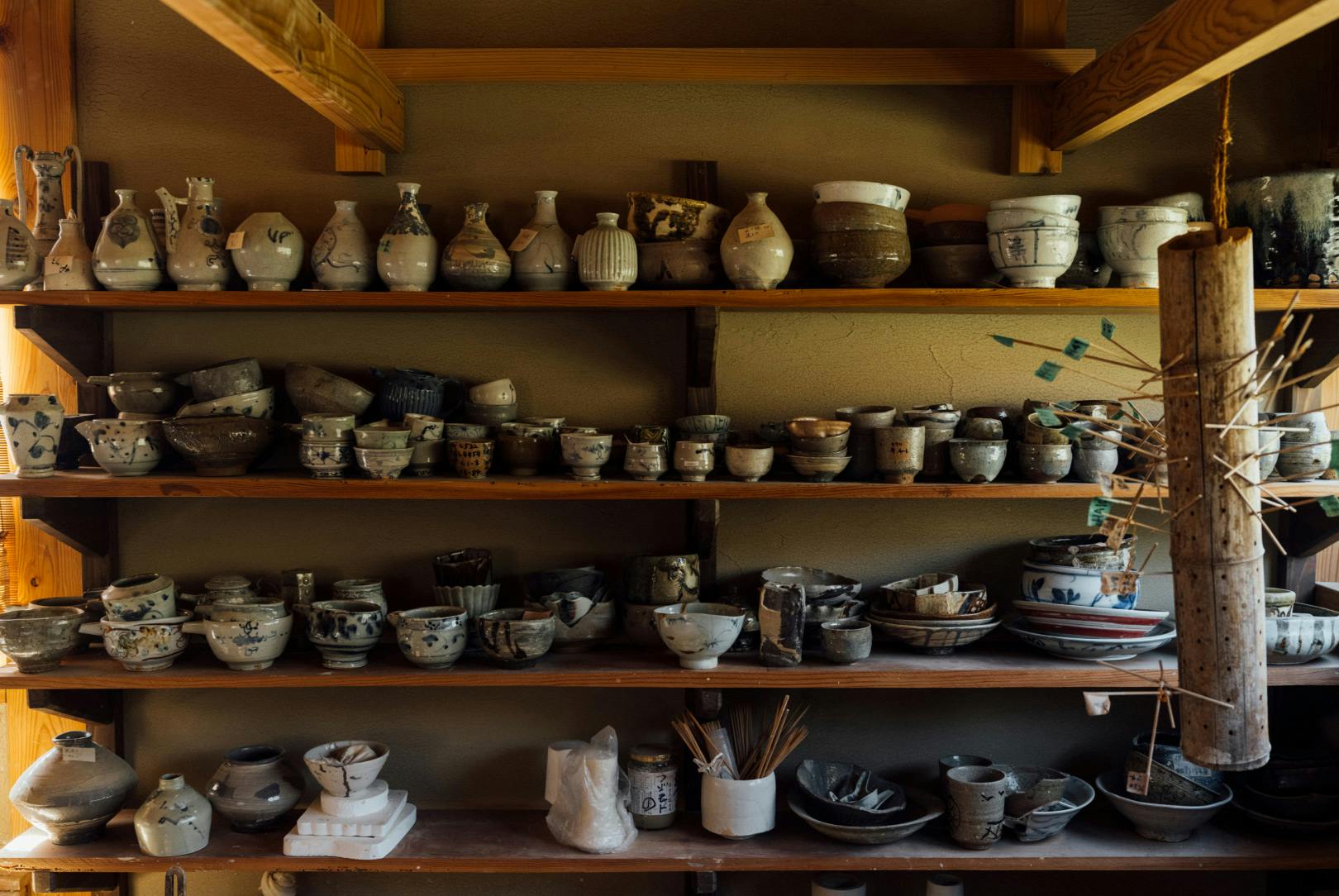
On most days Oka can be found in one of his workspaces, where regardless of condition or mindset, he uses the act of making as a means of drawing out what lies within. As the sun approaches the neighbouring ridge lines, bathing the main workshop in a gentle glow, he takes a seat at his pottery wheel and begins working a hefty lump of clay. The elegant, convex form of a large bowl takes shape through a series of firm, considered movements, before being swiftly removed to commence work on the next. A row soon forms on the adjacent benchtop, each piece revealing a dialogue of sorts. Working in this intuitive manner, perhaps best summarised by the expression ‘imagamama’, or ‘according to the moment’, reflects the honesty and forthrightness upon which his work is founded. The same philosophy extends to the process of painting his ceramics, for which he makes use of whatever tools are at hand, whether they be brushes or wild plants from the garden.
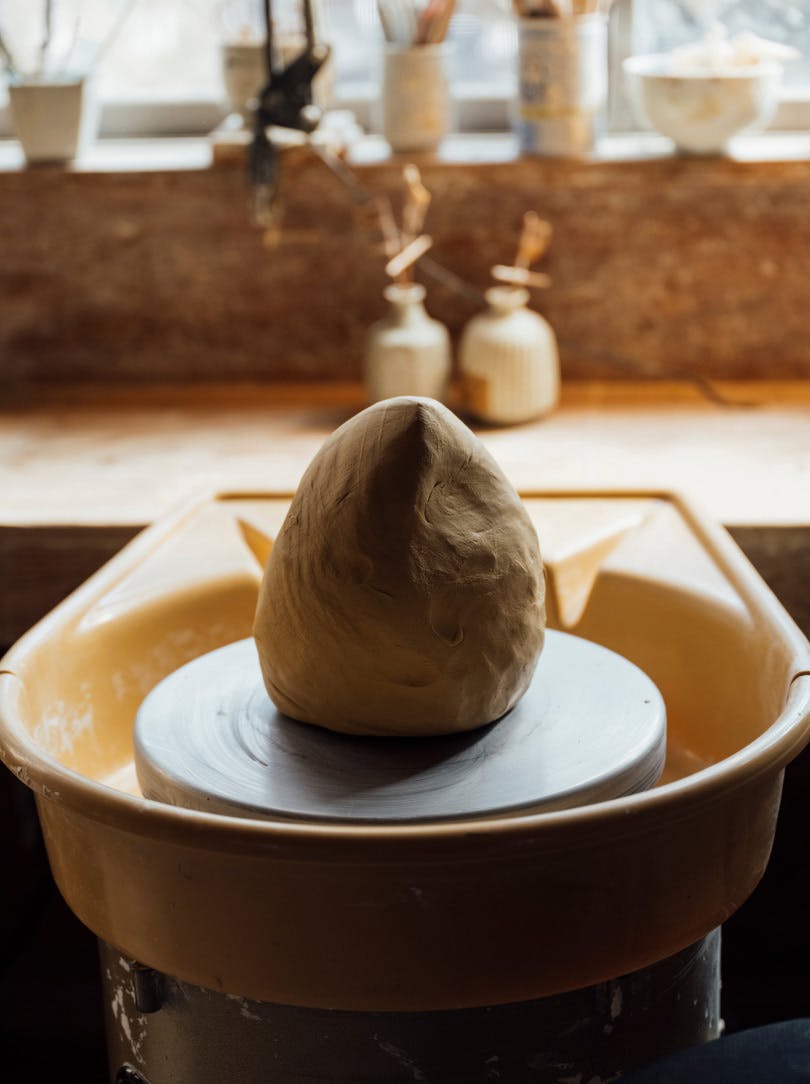
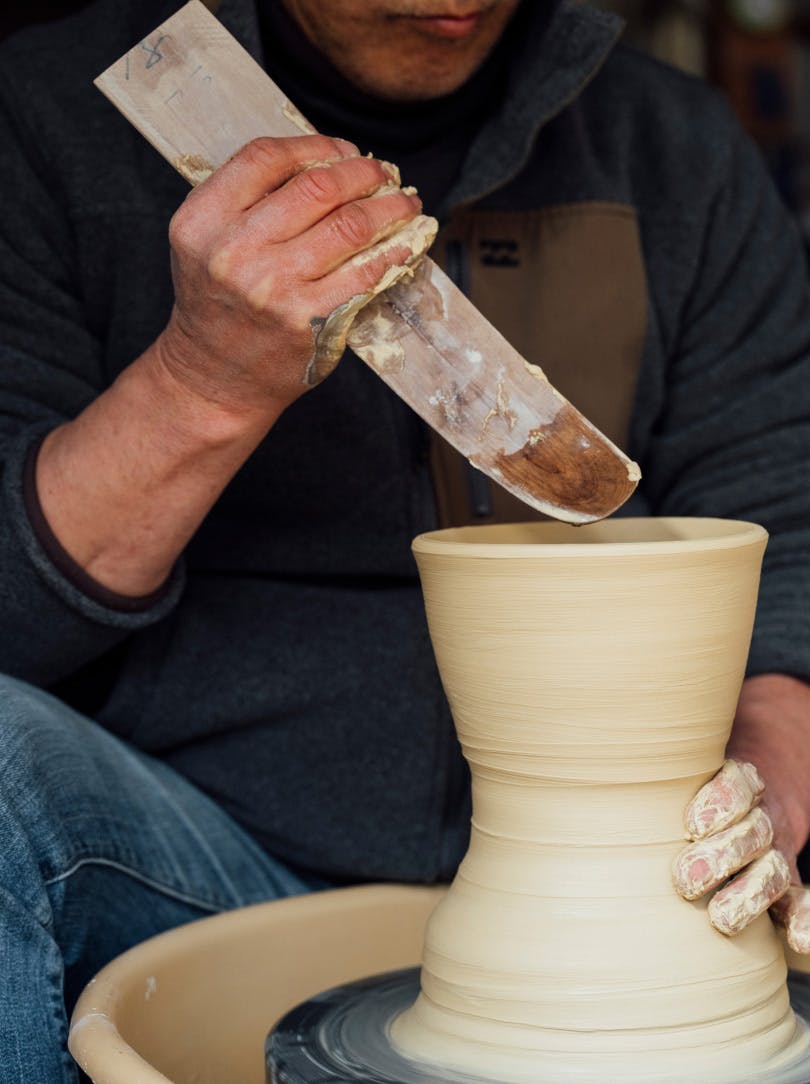
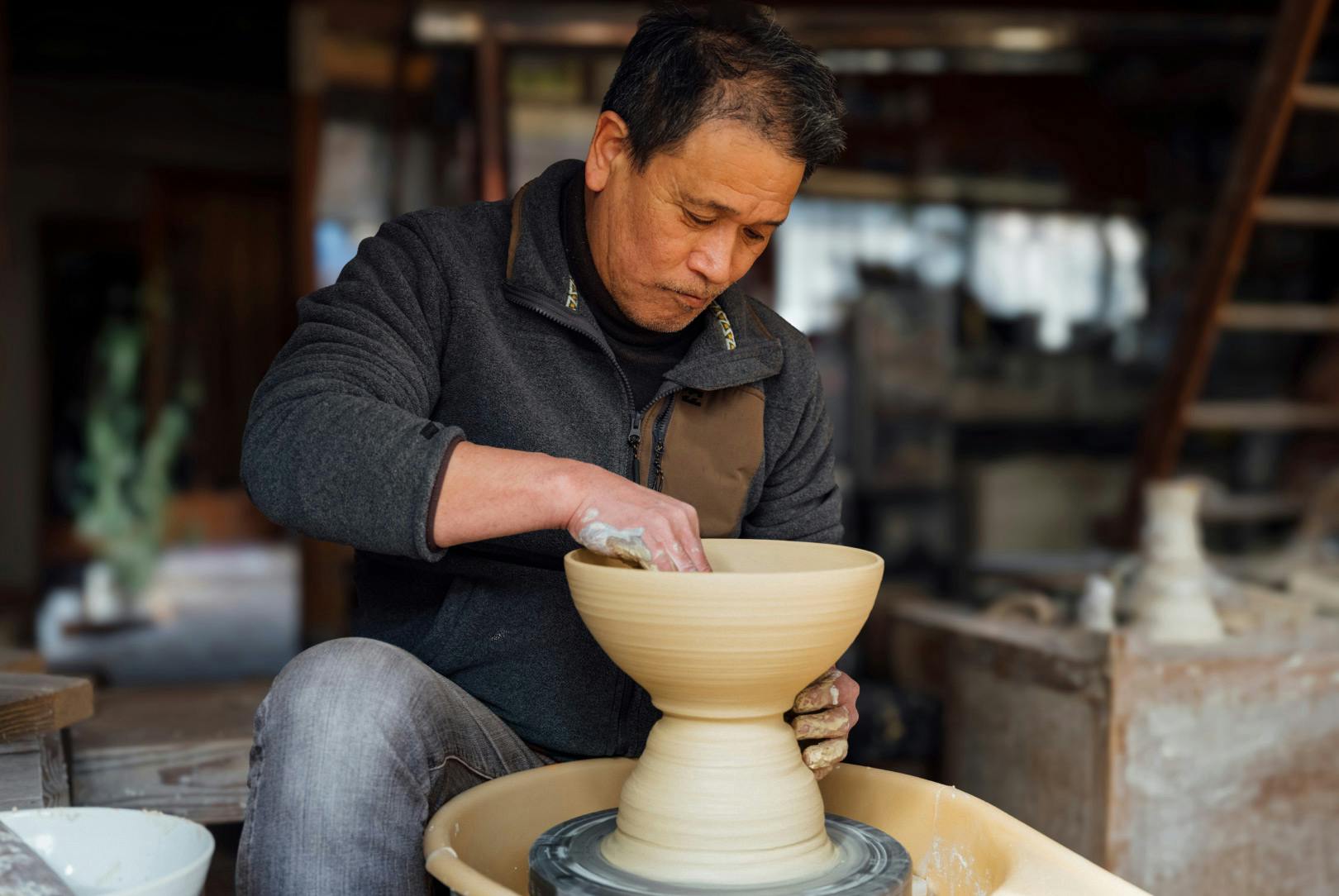
Now in his mid-sixties, Oka aims to continue creating at Tenpyogama for as long as he can. He also remains intent on avoiding labels, referring to himself simply as a “firer of things – even meat”, while remaining focused on his practice and letting his work speak for itself. “Essentially, I believe that expression is about exposing oneself. My work isn’t only about drawing on what I’ve accumulated; it’s also about revealing the things that I’ve chosen to throw away,” he says. “No matter the technique I use or the style I adopt, I want the work to contain the essence of Shingo Oka.”




